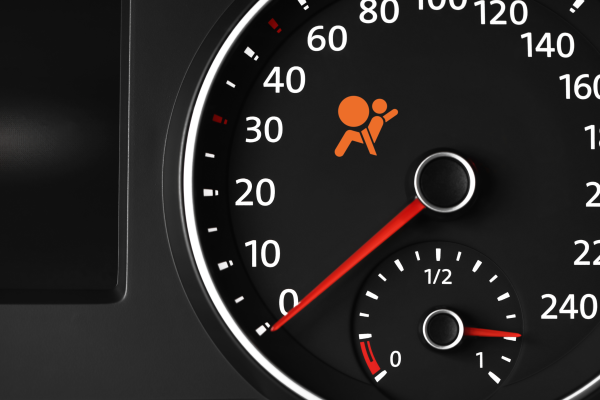Car Safety
Understanding SRS Airbags: A Life-Saving Guide

Introduction to SRS Airbags
Airbags, also known as Supplementary Restraint System (SRS), are a critical component of vehicle safety features. SRS airbags are designed to provide additional protection to passengers during a collision by deploying rapidly to serve as a cushion, thereby reducing the risk of serious injuries. They work in conjunction with seat belts to offer a comprehensive safety network that can mean the difference between life and death in the advent of a crash.
How SRS Airbags Work
The functioning of SRS airbags is a marvel of engineering and split-second timing. When a collision occurs, sensors in the vehicle detect the sudden deceleration and send a signal to the airbag's control unit. This signal then triggers a chemical reaction in the airbag inflator, which produces a harmless gas that inflates the airbag. All of this takes place in a matter of milliseconds, with the airbag fully deploying before the passenger makes contact with it.
Types of SRS Airbags
Modern vehicles are often equipped with a range of airbags designed to protect occupants from various angles:
Frontal Airbags: These are standard airbags that deploy from the steering wheel and dashboard, cushioning the driver and front passenger from impact with the vehicle's interior.
Side Airbags: Located in the seats or door panels, side airbags protect passengers’ pelvis and chest from a side-impact collision.
Curtain Airbags: These drop down from the roof lining to cover the side windows, protecting occupants’ heads in the event of a rollover or side-impact crash.
Knee Airbags: Installed beneath the steering column and dashboard, knee airbags help prevent lower extremity injuries to the driver and front passenger.
Importance of Maintenance and Inspection
To ensure the functionality and effectiveness of airbags, regular maintenance and inspection are indispensable. Vehicle owners should adhere to the following guidelines:
Check the airbag indicator light on the dashboard, which should illuminate briefly when the car is started then turn off. If it stays on, blinks, or doesn't come on at all, this indicates a fault in the system that needs to be checked by a professional.
Be cautious of modifications to the steering wheel, dashboard, or areas surrounding airbags as these can affect their deployment.
In the case of a vehicle recall involving airbags, it is imperative to have your vehicle serviced immediately.
Airbag Deployment and Replacement
Once an airbag has deployed, it cannot be reused and must be replaced. Working with a qualified technician who specializes in SRS systems is crucial for replacement, given the sophisticated nature of the system. Genuine parts designed for the specific make and model of the vehicle should always be used to ensure the integrity of the airbag system.
Airbag Safety Tips
While airbags greatly increase passenger safety, it is essential to follow best practices for maximum protection:
Always wear your seatbelt as it ensures that the airbag can perform effectively by keeping you in the correct position during a crash.
Adjust your seating position so there is at least 10 inches of distance between your breastbone and the steering wheel or dashboard.
Children 12 years old and under should always ride in the back seat, properly restrained, to protect them from potential injury from a front airbag.
SRS airbags are indispensable safety features in vehicles that have saved countless lives since their introduction. It is the responsibility of all vehicle owners and passengers to understand how SRS airbags work, the importance of their maintenance, and how to ensure they function correctly. By doing so, you can help guarantee that the airbags in your vehicle offer the maximum possible protection in the event of a collision, keeping you and your loved ones safer on the roads. Remember, a well-maintained airbag system is not just a part of your car; it's a crucial lifeline in a critical moment.
Vehicle Maintenance
Understanding and Fixing Your Car's Service Airbag Light Issue
Vehicle Maintenance
Seat Belt Cleaning Guide: Easy Tips and Tricks for Your Car
Introduction to SRS Airbags
Airbags, also known as Supplementary Restraint System (SRS), are a critical component of vehicle safety features. SRS airbags are designed to provide additional protection to passengers during a collision by deploying rapidly to serve as a cushion, thereby reducing the risk of serious injuries. They work in conjunction with seat belts to offer a comprehensive safety network that can mean the difference between life and death in the advent of a crash.
How SRS Airbags Work
The functioning of SRS airbags is a marvel of engineering and split-second timing. When a collision occurs, sensors in the vehicle detect the sudden deceleration and send a signal to the airbag's control unit. This signal then triggers a chemical reaction in the airbag inflator, which produces a harmless gas that inflates the airbag. All of this takes place in a matter of milliseconds, with the airbag fully deploying before the passenger makes contact with it.
Types of SRS Airbags
Modern vehicles are often equipped with a range of airbags designed to protect occupants from various angles:
Frontal Airbags: These are standard airbags that deploy from the steering wheel and dashboard, cushioning the driver and front passenger from impact with the vehicle's interior.
Side Airbags: Located in the seats or door panels, side airbags protect passengers’ pelvis and chest from a side-impact collision.
Curtain Airbags: These drop down from the roof lining to cover the side windows, protecting occupants’ heads in the event of a rollover or side-impact crash.
Knee Airbags: Installed beneath the steering column and dashboard, knee airbags help prevent lower extremity injuries to the driver and front passenger.
Importance of Maintenance and Inspection
To ensure the functionality and effectiveness of airbags, regular maintenance and inspection are indispensable. Vehicle owners should adhere to the following guidelines:
Check the airbag indicator light on the dashboard, which should illuminate briefly when the car is started then turn off. If it stays on, blinks, or doesn't come on at all, this indicates a fault in the system that needs to be checked by a professional.
Be cautious of modifications to the steering wheel, dashboard, or areas surrounding airbags as these can affect their deployment.
In the case of a vehicle recall involving airbags, it is imperative to have your vehicle serviced immediately.
Airbag Deployment and Replacement
Once an airbag has deployed, it cannot be reused and must be replaced. Working with a qualified technician who specializes in SRS systems is crucial for replacement, given the sophisticated nature of the system. Genuine parts designed for the specific make and model of the vehicle should always be used to ensure the integrity of the airbag system.
Airbag Safety Tips
While airbags greatly increase passenger safety, it is essential to follow best practices for maximum protection:
Always wear your seatbelt as it ensures that the airbag can perform effectively by keeping you in the correct position during a crash.
Adjust your seating position so there is at least 10 inches of distance between your breastbone and the steering wheel or dashboard.
Children 12 years old and under should always ride in the back seat, properly restrained, to protect them from potential injury from a front airbag.
SRS airbags are indispensable safety features in vehicles that have saved countless lives since their introduction. It is the responsibility of all vehicle owners and passengers to understand how SRS airbags work, the importance of their maintenance, and how to ensure they function correctly. By doing so, you can help guarantee that the airbags in your vehicle offer the maximum possible protection in the event of a collision, keeping you and your loved ones safer on the roads. Remember, a well-maintained airbag system is not just a part of your car; it's a crucial lifeline in a critical moment.
Vehicle Maintenance
Understanding and Fixing Your Car's Service Airbag Light Issue
Vehicle Maintenance
Seat Belt Cleaning Guide: Easy Tips and Tricks for Your Car


